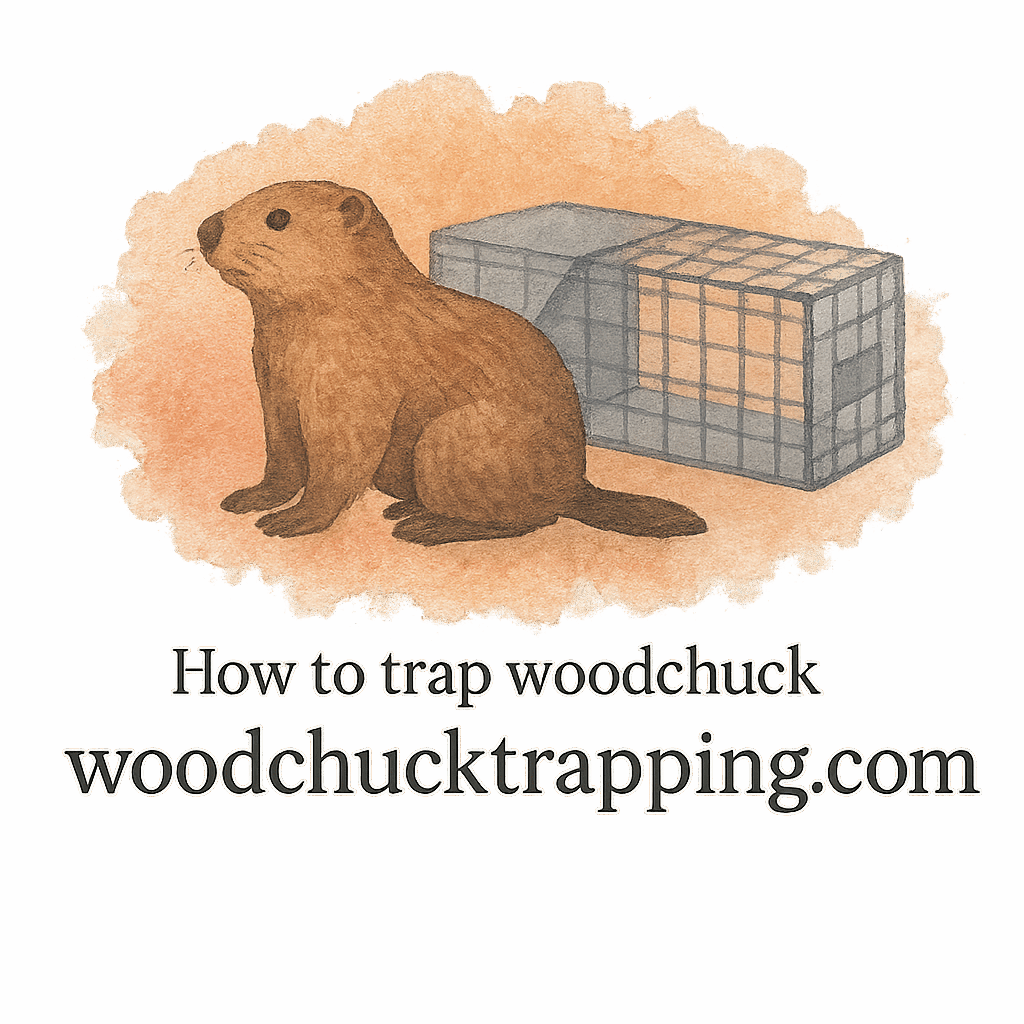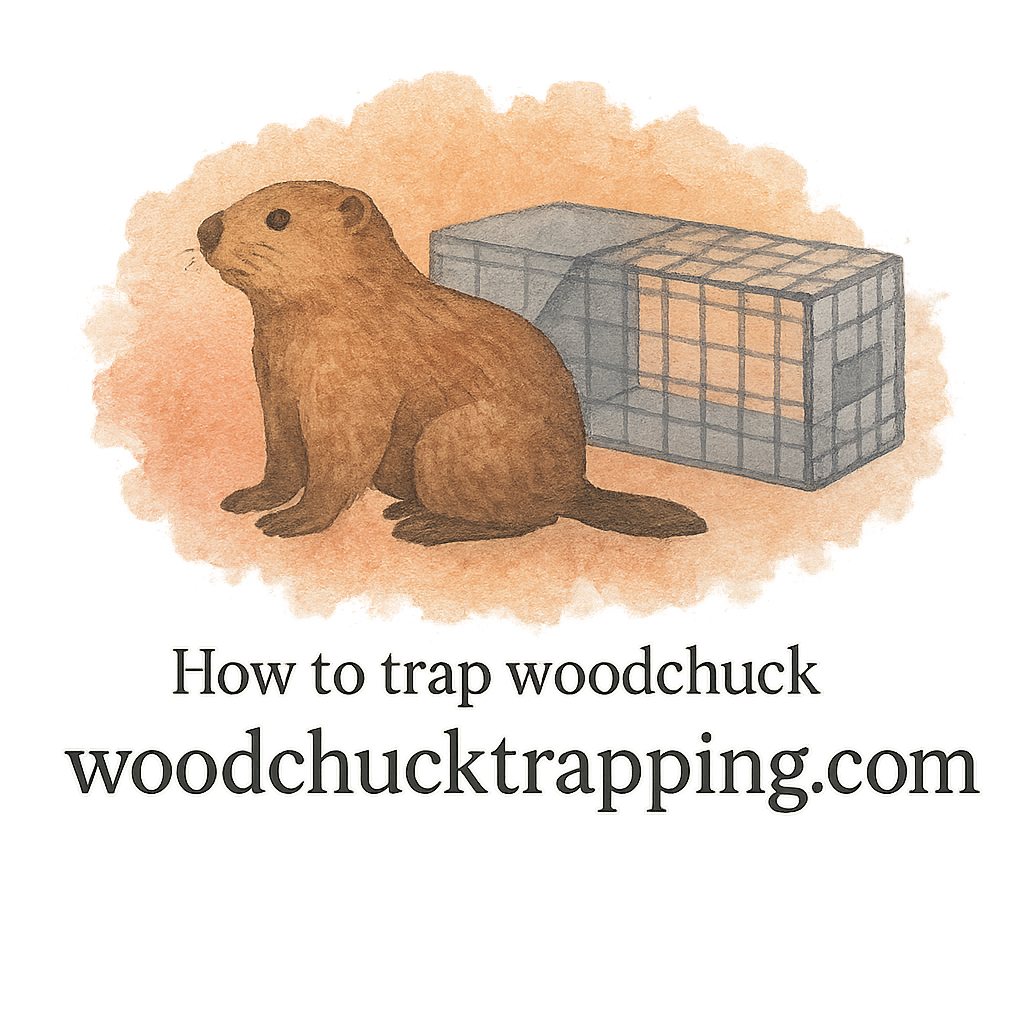If you’ve been noticing strange holes in your yard, chewed-up plants, or piles of dirt that weren’t there before, you might be facing a sneaky little invader — the woodchuck. In this article, we’ll dig (pun intended!) into the 6 signs you have a woodchuck problem, what to look out for, and how to stop these burrowing bandits in their tracks.
What Is a Woodchuck and Why Should You Worry?
Also known as groundhogs, woodchucks are chunky rodents from the marmot family. While they may look cute with their fuzzy faces and waddling walk, they can cause some serious damage to your property. They burrow, chew, and gobble up your garden faster than you can say “Punxsutawney Phil.”
If left unchecked, a single woodchuck can compromise your home’s foundation, destroy your landscaping, and even attract other unwanted critters.
Sign #1: Fresh Dirt Mounds Near Burrow Entrances
Understanding Woodchuck Burrowing Behavior
Woodchucks are master diggers. If you start seeing fresh, loose mounds of dirt—especially near the base of your home, deck, shed, or garden bed—it’s likely the work of a woodchuck.
These mounds usually indicate active burrows, which are their main base of operations.
Risks Posed by Burrows
Aside from being an eyesore, these burrows can:
- Undermine building foundations
- Create tripping hazards
- Encourage flooding or erosion
For more on this, check out our section on burrows to identify what you’re really looking at.
Sign #2: Large Holes in Your Yard or Garden
Identifying Woodchuck Holes
These aren’t your typical critter holes. Woodchuck holes are often:
- 8–12 inches wide
- Surrounded by disturbed soil
- Located near vegetation, porches, or fence lines
Dangers of Large Entry Holes
They can trip unsuspecting feet, damage your mower, and signal a growing infestation.
Sign #3: Extensive Plant Damage
What Woodchucks Eat
Woodchucks are vegetarians with a big appetite. They’ll chow down on:
- Leafy greens
- Melons
- Carrots
- Flowers
How to Differentiate Between Deer, Rabbits, and Woodchuck Damage
Unlike deer who strip leaves or rabbits that nibble delicately, woodchucks tend to flatten plants and leave wide tooth marks.
Learn more about identifying and preventing yard damage before your garden becomes a salad bar for rodents.

Sign #4: Tracks and Droppings
Recognizing Woodchuck Tracks
Their tracks show five toes in the front and back, with long claws visible in soft soil or mud.
Health Concerns of Woodchuck Droppings
While not as dangerous as raccoon poop, woodchuck droppings can carry parasites. Always wear gloves when cleaning any mess — check out our glove gear for safe handling.
Sign #5: Daytime Sightings of a Plump Rodent
Woodchuck Habits and Appearance
If you see a chunky, brownish rodent waddling through your yard in the early morning or late afternoon, that’s probably your culprit. Woodchucks are diurnal, meaning they’re active during daylight.
When to Spot Them
You’ll most likely see them in spring and summer when they’re fattening up for winter.
Sign #6: Structural Damage Around Your Property
How Burrowing Affects Foundations, Sheds, and Fences
Over time, woodchuck tunnels can weaken structures. That cute critter might be causing:
- Tilted fencing
- Sinking patios
- Cracked foundations
Want to stop this before it gets worse? Learn our proven trapping techniques.
Why Ignoring These Signs Is a Mistake
It’s tempting to let nature do its thing, but trust me—ignoring woodchuck problems only makes things worse. What starts as one hole can quickly lead to multiple tunnels, bigger infestations, and costly repairs.
Next Steps: What to Do If You Suspect a Woodchuck Problem
Check Local Laws and Safety Requirements
Before you go full trapper mode, brush up on your area’s wildlife control laws and safety rules. Visit our Laws & Safety page to stay legal and safe.
Recommended Equipment and Tools
When it comes to evicting these tenants, you need the right gear. Our equipment reviews break down the best traps, bait stations, and more.
Humane and Effective Trapping Solutions
Best Baits and Lures
Woodchucks love sweet fruits like cantaloupe. Learn how to set the perfect bait station on our baiting and luring guide and find optimal trap scents for success.
Handling and Releasing Trapped Animals
Caught one? Great job! Now, what next? Our tips for handling and safely releasing or relocating woodchucks are must-reads.
Prevention Tips to Avoid Future Infestations
Once they’re gone, keep them gone with these smart strategies:
- Seal off crawl spaces and sheds
- Use mesh fencing underground
- Keep gardens tidy and less attractive
For full guidance, check out our infestation prevention guide.
Conclusion
Spotting the signs of a woodchuck problem early can save you a ton of hassle—and money. From dirt mounds to garden massacres, these signs are your early warning system. Don’t ignore them. Act fast, stay informed, and equip yourself with the tools and tips that actually work.
Want to dive deeper? Explore all our resources at woodchucktrapping.com for guides, gear reviews, and expert strategies.
FAQs
1. What’s the fastest way to get rid of a woodchuck?
Use a properly baited live trap with cantaloupe or sweet corn and place it near the main burrow entrance.
2. Are woodchucks dangerous to pets?
They’re generally shy but can bite if cornered. Keep pets away from burrows to avoid conflicts.
3. How deep do woodchuck burrows go?
Burrows can be up to 5 feet deep and extend more than 30 feet underground.
4. Can I flood a burrow to get rid of them?
It’s not recommended. It’s inhumane and rarely effective. Trapping is more reliable and legal.
5. Do woodchucks return to old burrows?
Yes, especially if they were undisturbed. Always collapse and seal burrows after removal.
6. What’s the best time of year to trap woodchucks?
Late spring to early summer is ideal when they’re most active and food is abundant.
7. How do I know if the burrow is still active?
Look for fresh dirt, footprints, or droppings near the entrance.


